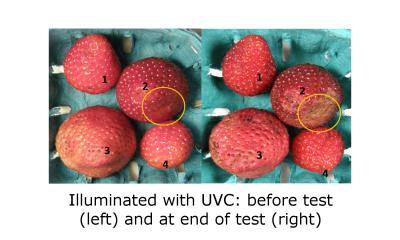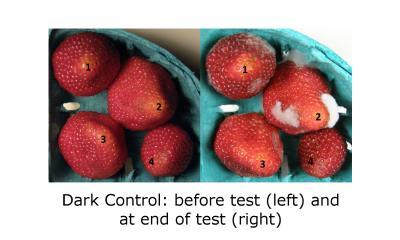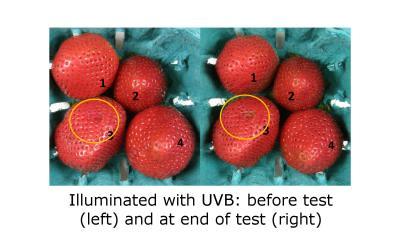UV light could double shelf life of strawberries
Strawberry lovers rejoice: the days of unpacking your luscious berries from the refrigerator only to find them sprouting wispy goatees of mould may be numbered.
US researchers have demonstrated that low irradiance ultraviolet (UV) light directed at strawberries over long exposure periods at low temperature and high humidity - typical household refrigerator conditions - delays spoilage.
A research team from the USDA’s Food Components and Health Laboratory and Sensor Electronic Technology, Inc (SETi) used a novel device incorporating LEDs that emit UV at wavelengths found in sunlight transmitted through earth’s atmosphere.

The results are reported to be significant because previous attempts using traditional UV light sources for produce storage resulted in severe drying, and it was unknown if the advantages of long exposure to low-level UV light would be effective against rot.
While LEDs have the ability to span the wavelength range from near UV to infrared, the full UV spectrum had presented challenges for LED manufacturers. SETi developed a special technology to fabricate UV LEDs across the entire UV spectrum from UVA to UVC. This flexibility allowed them to tune the emitted light to the wavelengths most effective for this application.

“UV-LEDs presented the opportunity to try low-power devices that work well in the cold and can be engineered to work in small spaces such as refrigerator compartments,” said lead USDA researcher Steven Britz.
To test the LEDs, the researchers placed one batch of strawberries in a dark refrigerator and another in a refrigerator exposed to UV-LEDs. The UV-treated strawberries stayed mould-free for nine days - a twofold shelf-life extension. The extended shelf life was judged by weight, moisture content, concentration of select phytochemicals, visible damage and mould growth.

The team is working to commercialise the technology for home refrigerators.
“These findings are expected to have a major impact on the appliance business to extend the shelf life and preserve nutritional value of fresh produce while reducing waste and saving money for every household,” said Remis Gaska, president and CEO of SETi.
The research results were presented at the Conference on Lasers and Electro-Optics (CLEO:2013).
Santa creates a spike in Australia's milk demand
Australian households are gearing up for the country's biggest night of dairy consumption,...
Not all processed fats are bad, study finds
A UK study into two types of industrially processed hard fats, which are widely used in the food...
Reimagined frozen foods on trend in next Cultivate program
Seedlab Australia has announced the next wave of FMCG businesses joining its 12th round of the...











